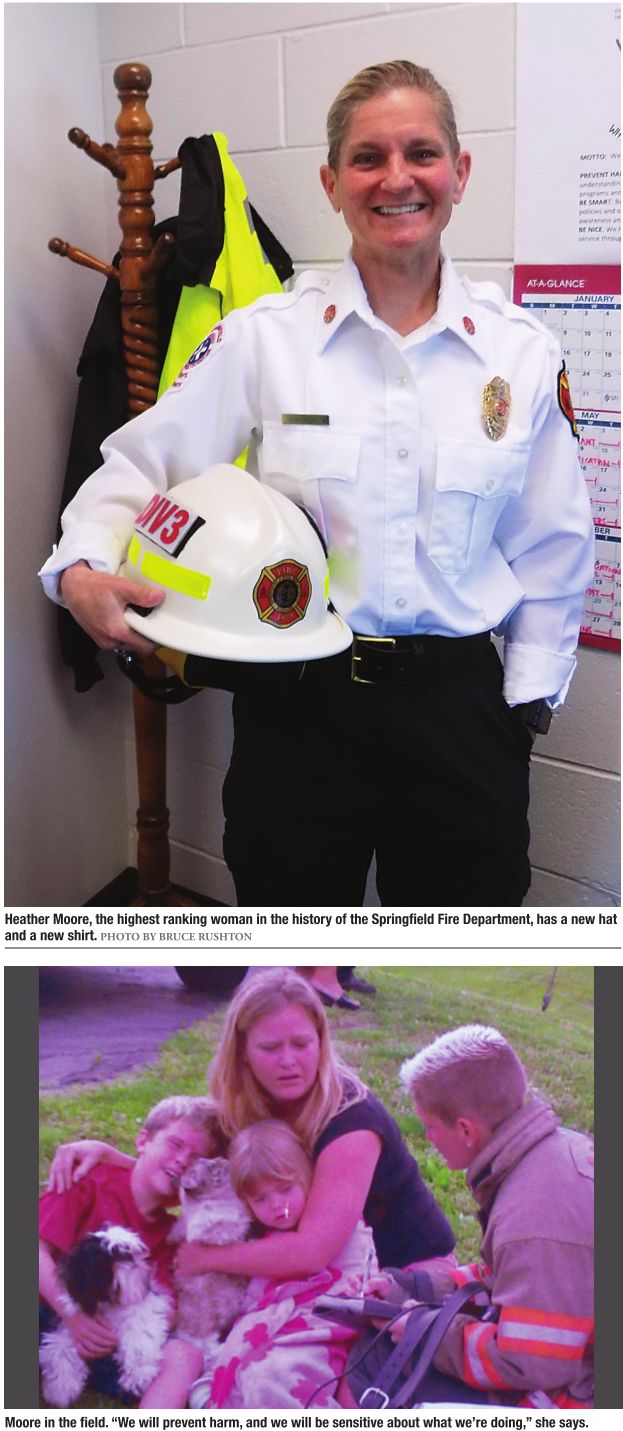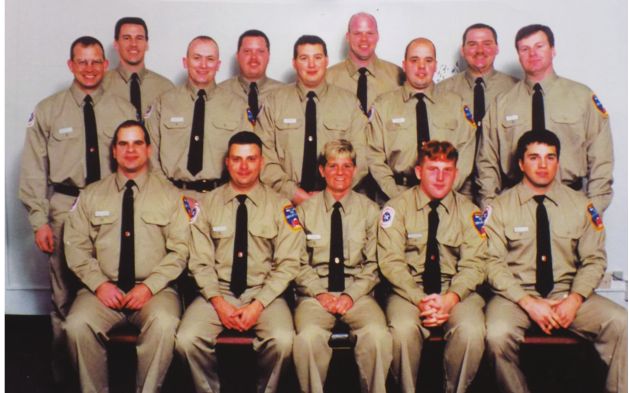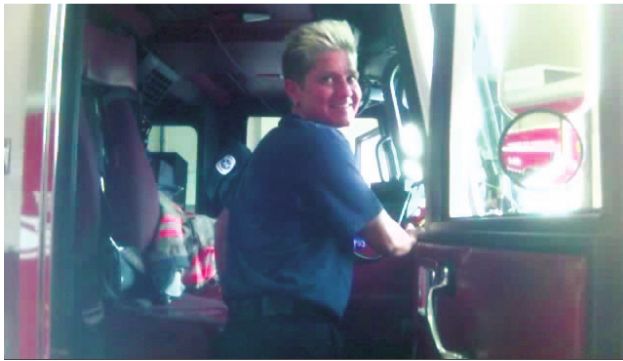
As a basketball player, Heather Moore didn’t fit the mold.
Chiefly, she was too short and too slight – vintage media guides from High Point University in North Carolina, her alma mater, list her at five foot six. In middle school, she played at south of five feet, and her coach told her that she’d never make it as a college player.
“I was a tiny, scrawny little thing, and people wondered why I wanted to play the game,” Moore told the Greensboro News and Record during her senior year in 1993. “They told me I’d never be big enough to play when I got to college.”
Moore proved big enough. A quarter-century after her senior year, she remains third on the alltime assists list at High Point, where she recorded 448 dishes during her collegiate career. Her reluctance to shoot was fierce – during her college career, she said she could still hear her mother and high school coach screaming at her to shoot when she was open.
“I’d only shoot if the option to pass wasn’t there,” she told the News and Record during her final season in college. “I hated to think about missing a shot. I guess I’m too much of a perfectionist.”
Shelly Whitaker Barnes, a college teammate, remembers the pass she got, if not the opposing team, after Moore stole the ball and led the break. “The defense was playing her well,” recalls Barnes, who is now athletic director and director of student support at Lenoir Community College in North Carolina. “I was tailing her. She went between the legs, completely nonchalant. It wasn’t for show, it was just a great pass. You don’t see that, or you didn’t see that back then.”
Beyond the ability to go behind the back and between the legs and otherwise make “crazy passes,” Moore, Barnes recalls, was both selfless and driven. “She’d come to practice with the intention of not only getting better herself, but making the team better,” Barnes says. “You never had to worry about pushing Heather.”
Barnes lost touch with Moore after college, but she isn’t shocked to hear that her former teammate has just been named a division chief of the Springfield Fire Department, which makes her the highest-ranking woman ever in a department that’s dominated by men, like many other municipal fire departments across the nation.
“I can’t say I ever imagined her doing that, but I’m not at all surprised,” Barnes said. “She’s such a hard worker and such a go-getter – it’s right in with her personality.”
“She’s a firefighter”
Less than three weeks into her new job as chief of the department’s training division, Moore has at least one adjustment to make: Her white command shirt fits like a tent, evidence that the department didn’t have a person of her dimensions in mind the last time shirts for toptier staff were ordered. For now, she’s making do with just one shirt, rolling up the cuffs and learning the benefits of Shout! stain remover to guard against ring around the collar.
“It might stand on its own by the time I’m done with it,” she says.
Moore
says she got emotional when she recently visited Station One downtown
to pick up her firefighting pants and coat and other gear that had
protected her from risks she no longer will face. She will, she says,
miss pulling ceiling, a cruddy-sounding job that is exactly what the
name suggests: Taking down ceilings with a metal hook to search for
fire. “Oh, it’s great,” she insists. “I love physical labor.”
It’s
an attitude not lost on Mayor Jim Langfelder, who interviewed Moore
about becoming fire chief before settling on Allen Reyne, who was
promoted to the job after former Chief Barry Helmerichs retired in
April.
“It’s pretty clear, she’s a firefighter,” the mayor says.
Reyne,
who promoted Moore from captain after becoming chief last month, says
that she has sufficient chops to rise as high as she likes in the fire
department. Moore dismisses the notion when asked if she’d like to be
chief. “I can’t see that,” she says. “I’m where I’m supposed to be.”
Then
again, Moore professes admiration for the military. The armed forces,
she says, promote core values and accountability. “I very much think I
would have thrived in the military,” she says. “They know who they are.”
Call
it karma, destiny or just plain luck, but Moore’s 1996 arrival in
Springfield was not a given. During college, she thought about working
as an insurance claims adjuster. After graduating cum laude from
High Point University with a degree in history, she came to Springfield
to be with a woman and work at Aldi’s, where she was on track to become a
manager. Neither the relationship nor a career selling groceries panned
out. But Aldi’s proved auspicious. A co-worker’s husband worked for the
Springfield Fire Department. Maybe, she suggested to Moore, you should
take the entrance exam. She did. She passed. And she excelled.
Just
six years after becoming a firefighter in 2000, Moore was teaching
others at the state fire academy in Champaign, where she’s been an
instructor since 2006. If you ever are trapped in a collapsed trench and
someone calls the fire department, there’s a good chance that Moore
will be there with you, at least in published form. She, quite
literally, wrote the book on how to accomplish trench rescues, with The Trench Rescue Technician Student Field Guide coming in pocket size for easy reference while in the field.
Moore’s
book includes drawings and photos and Occupational Safety and Health
Administration data and detailed instructions for dealing with trenches
of all sorts, and there are more sorts, it turns out, than a layperson
might imagine. She wrote it without benefit of ever actually saving
someone trapped beneath the earth; what she lacked in experience, she
made up with research on how to dig without having a trench collapse on
rescuers. “It’s like putting puzzle pieces together, having to figure
out a shoring system,” she says. “I’m curious. If you have to teach
something, you’d better know what you’re talking about. … It’s always
been a part of me – I’ve always been curious. That’s been an integral
part of my survival.”
Despite
a dozen years teaching at the state academy and her status as chief of
training for the department, Moore says she’s not comfortable in front
of a classroom. “It isn’t easy,” she says. “I’m very much an introvert.”
You wouldn’t know it, according to one firefighter who asked that his
name not be used.
“I’ve
worked with her, I’ve worked for her, not on a steady basis, but enough
to see she can be very, very personable, yet be very, very
professional,” the firefighter says. “She’s got no problem grabbing you
by the ear, pulling you outside and telling you what you did wrong. This
is the honest to God truth: The only person who’s going to bitch about
her is the person who doesn’t want to work hard and better themselves.”
There
is no training course that covers everything that can happen in the
field, and so the ability to MacGyver solutions is crucial.
Moore, point guard that she
once was, is a master of improvisation. “She’s going to find a way to
cheat, steal and borrow to get the job done,” the firefighter says. “You
get in certain situations where, sometimes, some people get tunnel
vision. Not her. She’s looking at the whole world around a problem.”
Sometimes,
it’s a matter of sheer determination. The firefighter recalls Moore
pulling him across a concrete floor, with both of them in full gear,
during a rescue drill aimed at teaching firefighters how to save fallen
colleagues. The procedure required her to lay on his back, put her arms
through his armpits and pull him along as she crawled. “I’m 240 pounds,”
he says. “The fact of the matter is, she’s basically force-crawling
with someone twice her weight, which is pretty impressive.”
Strictly
from an economic standpoint, it’s a good job, with the department’s
average salary last year exceeding $79,000, nearly $5,000 more than in
the police department. Division chiefs with 9-5 jobs make more than
$120,000. For others, the work schedule – 24 hours on duty followed by
48 hours of time off – allows firefighters to supplement incomes with
second jobs and commute just three days a week, and so it is easy for
those who enjoy country living to reside far outside Springfield. There
are just five women on the force of more than 220. Why so few?
“I
think the physical demands, being locked away for 24 hours in a sweaty
bunker with a bunch of dudes is probably not very appealing (for
women),” offers the firefighter, who requested anonymity.
Moore
figures it’s a matter of awareness. “The fire service has been slow to
catch up,” she says. “We’d have fire safety weeks in school, and
firefighters would come. They were all men. I just didn’t associate
myself with that, growing up.”
The most qualified
Moore
says she’s never felt uncomfortable in the department due to her
gender. “I’ve always felt OK and accepted,” she says. “That comes from
being OK with who you are.”
Reyne says that gender was the least of his considerations when he promoted Moore.
“We
have a lot of smart people on the department – there were people that,
if she would have said no or when she retires, could take over the
training division,” Reyne says. “At this date, at this time, she was
clearly the most qualified.”
Training, Moore says, is more than just spraying water, practicing rescue techniques and rehearsing first aid.
Firefighters
tend to be self starters, and so Moore says that encouraging healthy
eating habits and otherwise looking beyond what to expect in burning
buildings and accident scenes is an important part of her job.
“Sometimes you need to be told, ‘You need to eat,’” Moore says. “Maybe
you need to think about taking a nap. … We are not here to make robots.
We are making better people.”
People
skills are important, she says, and firefighters feel things, too, as
they see tragedies unfold and lives changed forever. “I am there, and
I’m vulnerable and I feel the hurt and the pain and the unknown,” she
says. “When I first came on, it’s ‘You don’t talk about those things.’
You do need to talk about them.”
During
last month’s promotion ceremony, Moore appeared to tear up a bit as
Patrick Kenny, a friend who is fire chief of Western Springs near
Chicago, pinned on her new badge. Langfelder talked about glass
ceilings. Reyne talked of solving all of the department’s problems
during long-ago talks with Moore across kitchen tables.
At
one point during their careers, Reyne and Moore were both assigned to
Station Two, where the future chief developed an admiration for Moore’s
ability to pilot a fire engine through narrow, dark roads near Lake
Springfield as well as her work ethic. “She always stayed busy,” the
chief recalls. “Always on her computer and always working. She goes 100
mph.”
There will, Moore says, be no surprises with her in charge of training.
“I
think I will be fair, and they will be aware of my expectations,” she
says. “We will prevent harm, and we will be sensitive about what we’re
doing.”
Contact Bruce Rushton at [email protected].